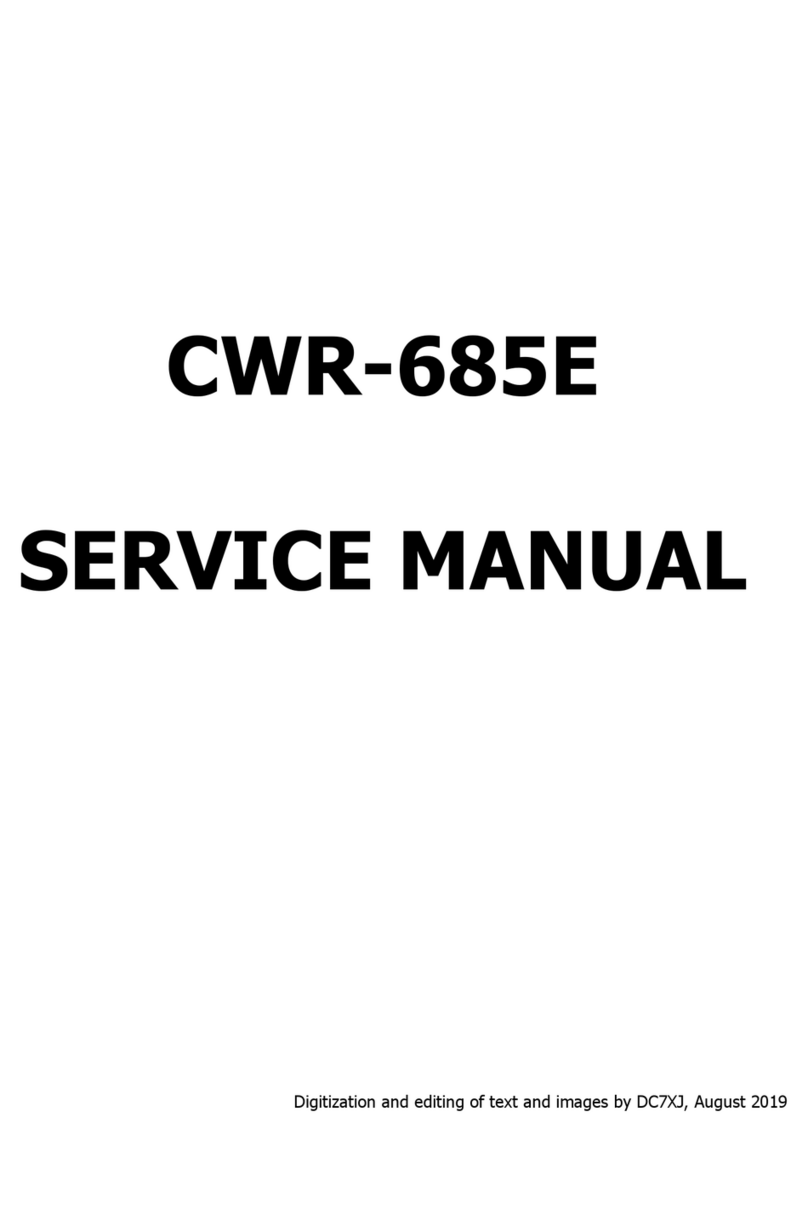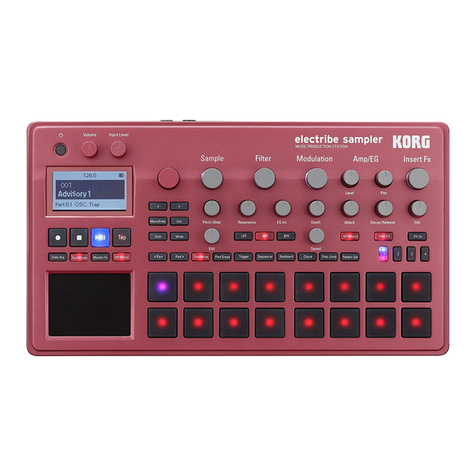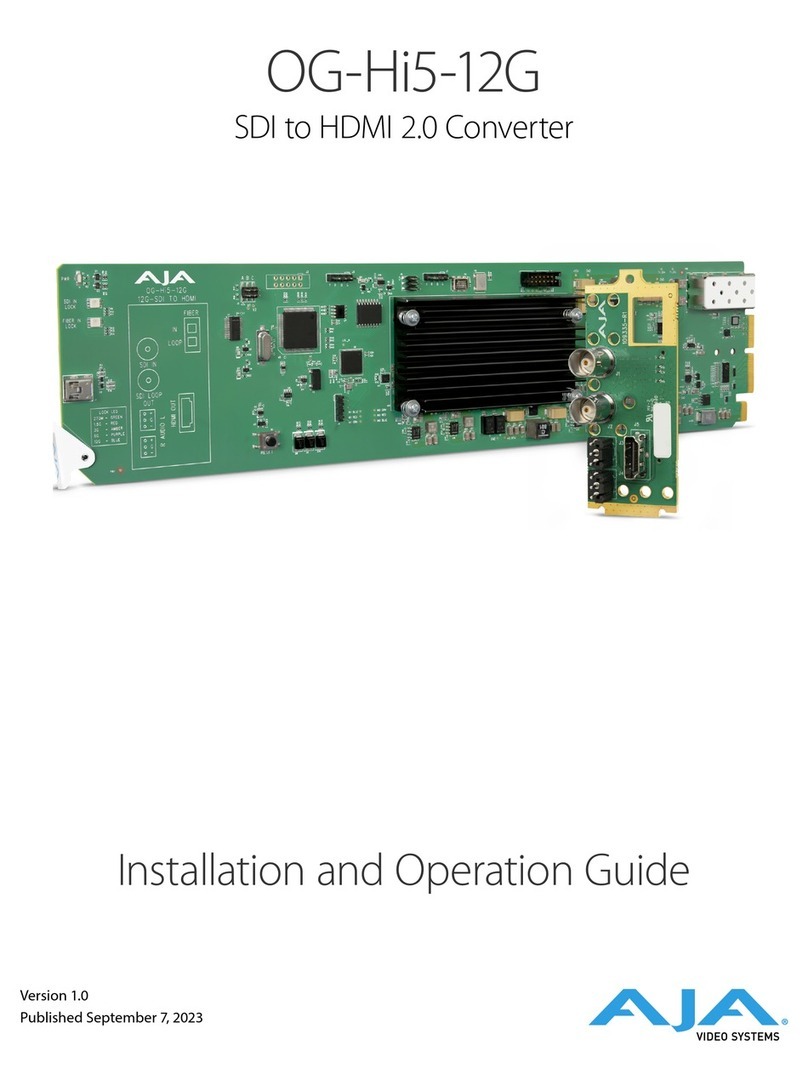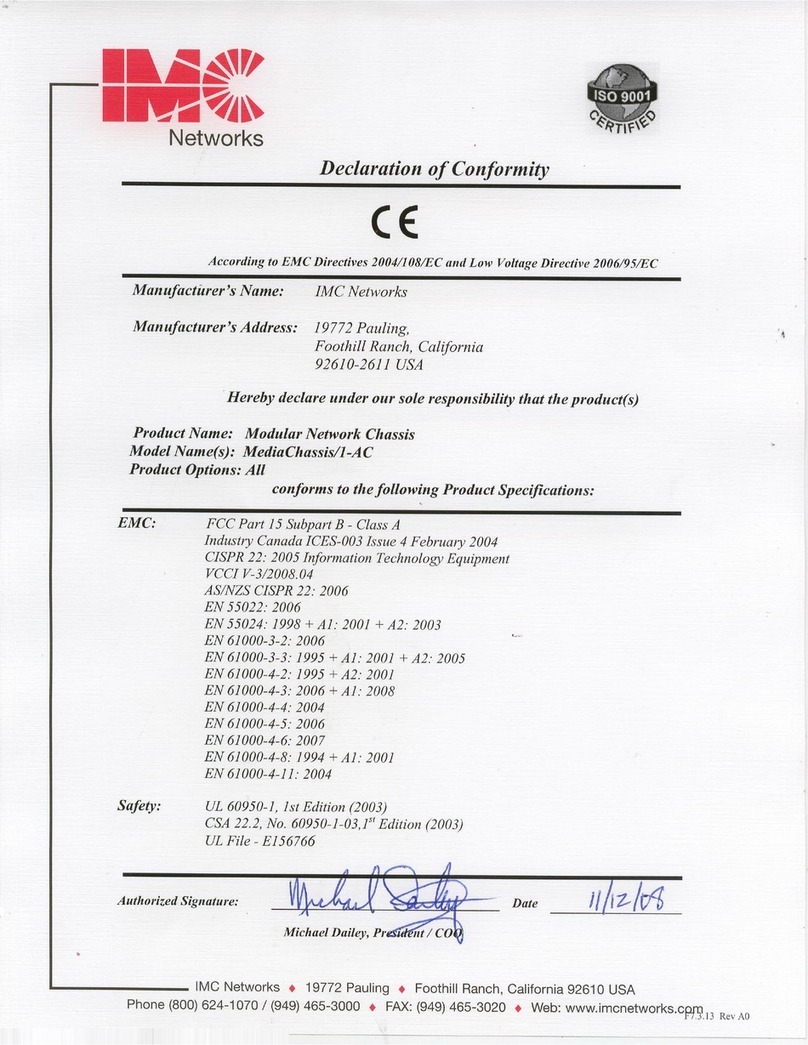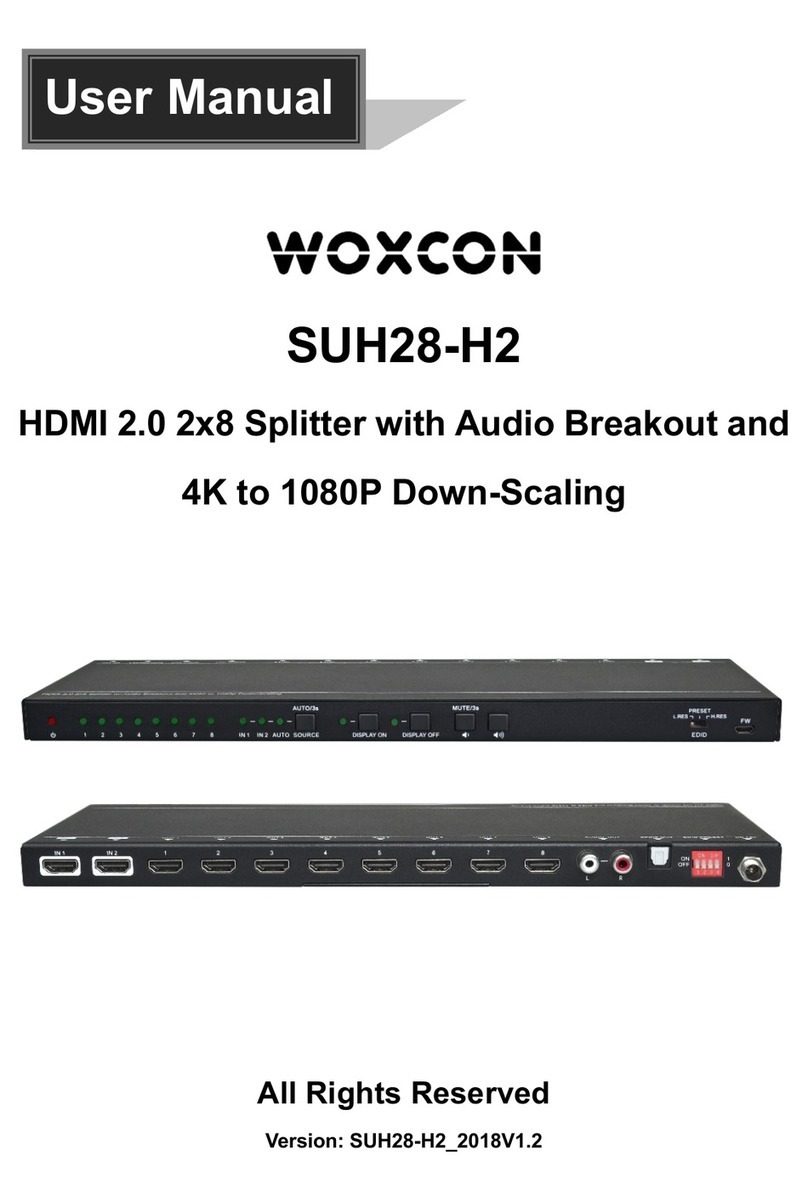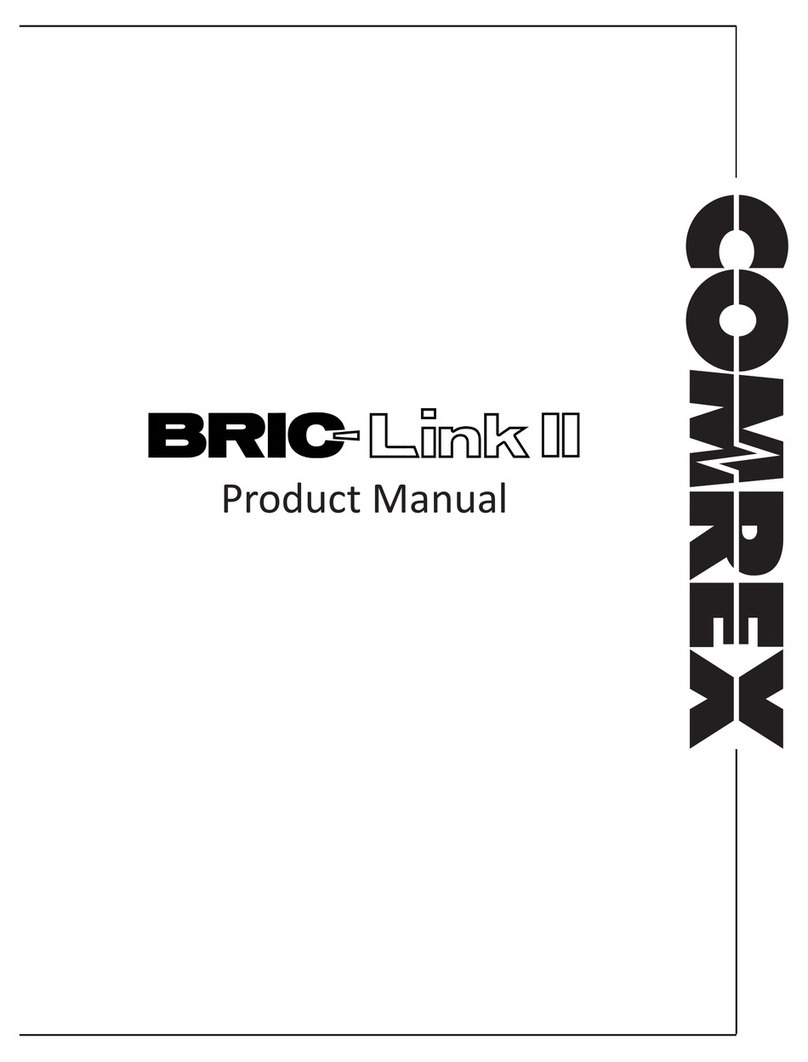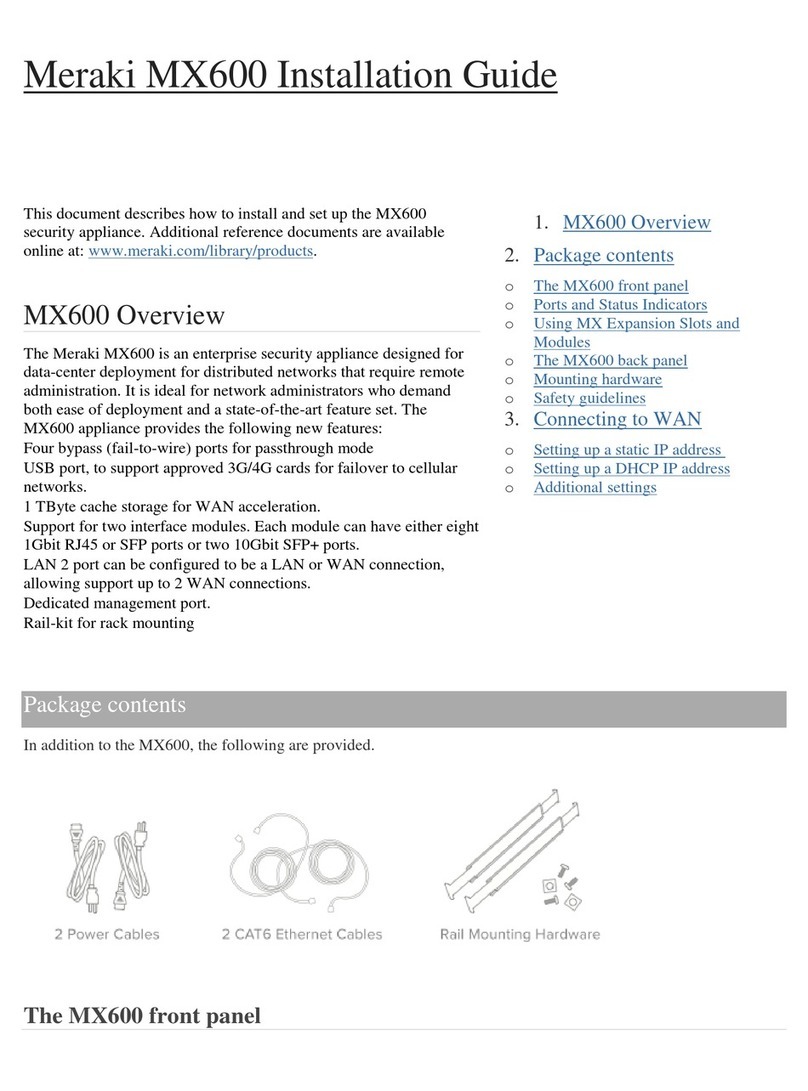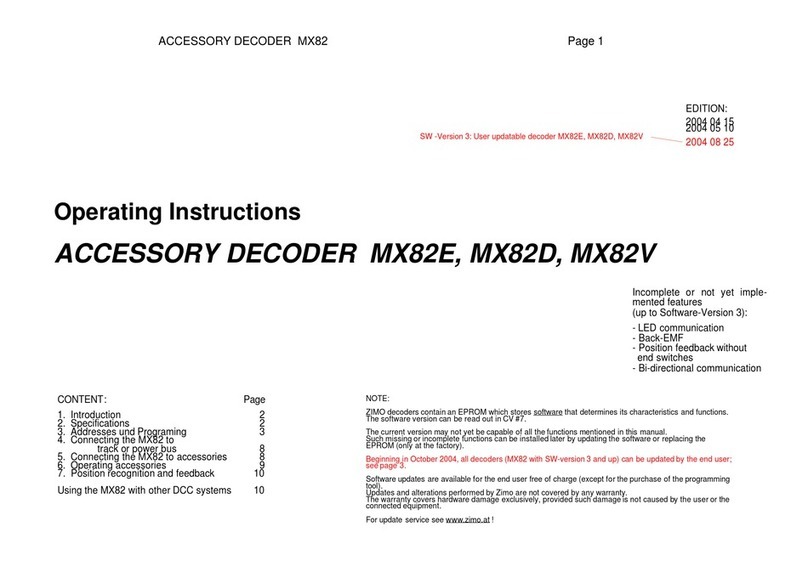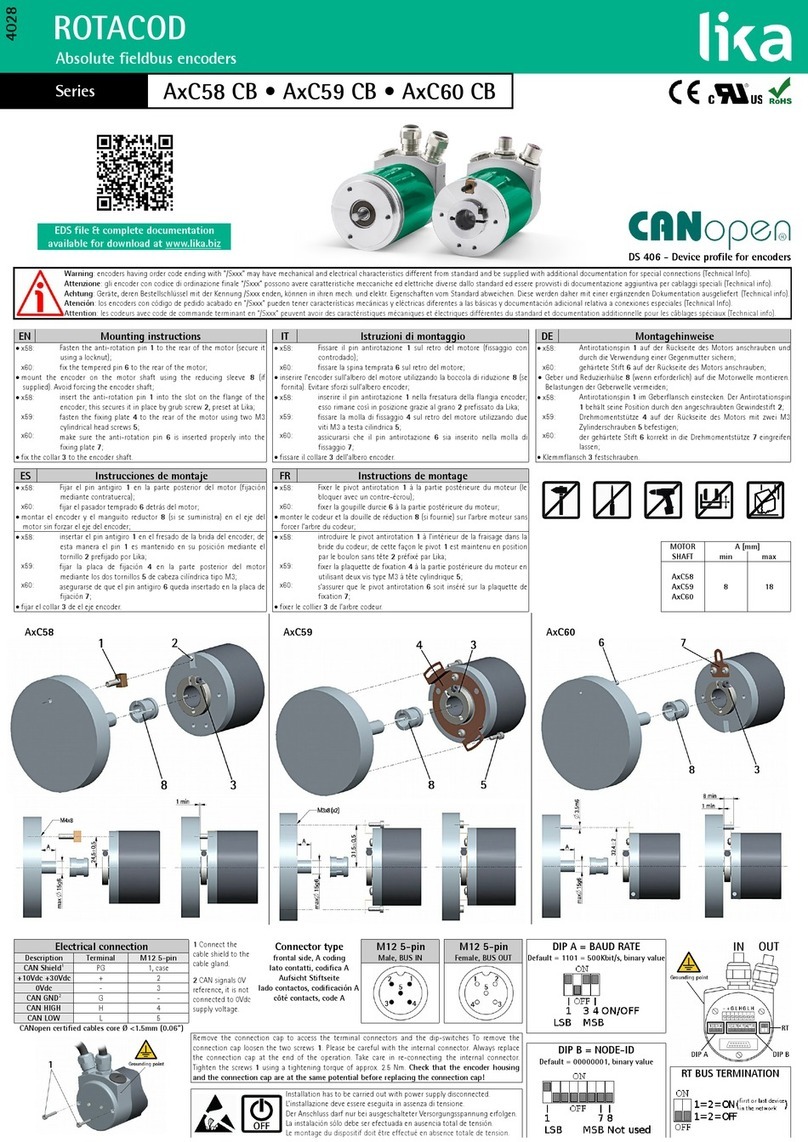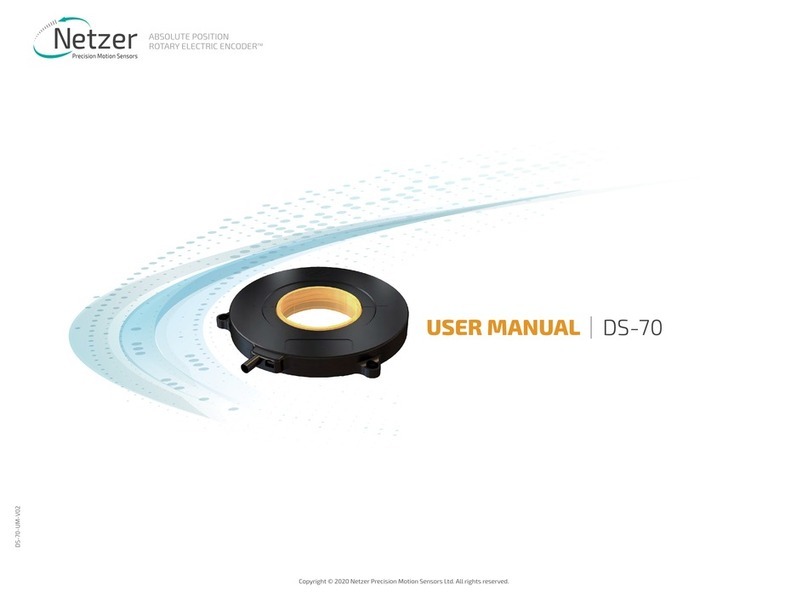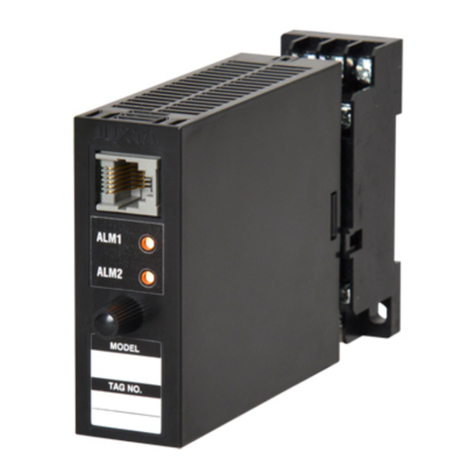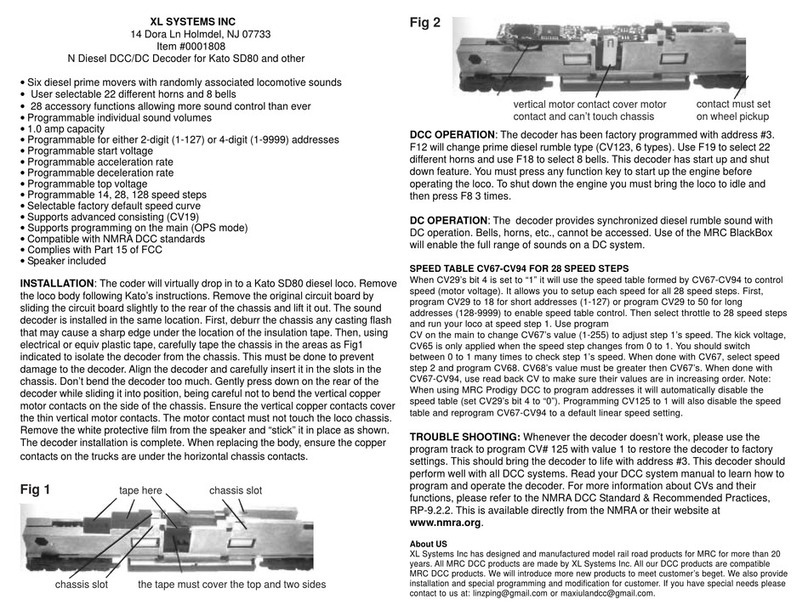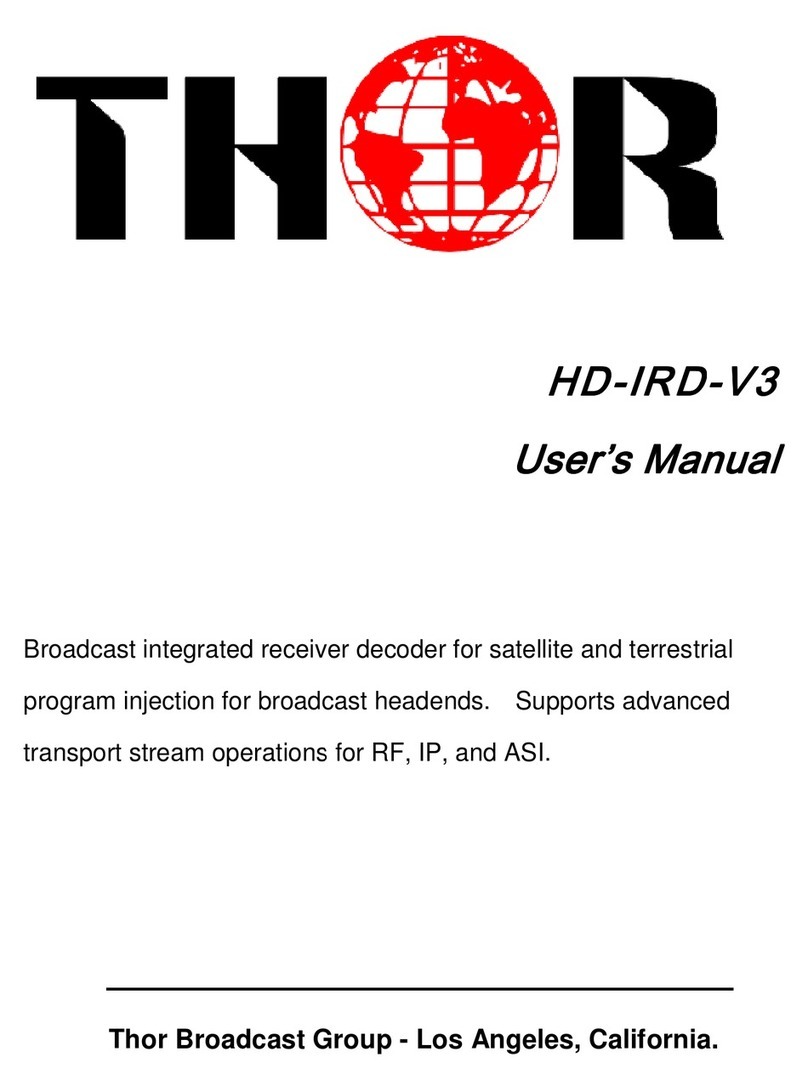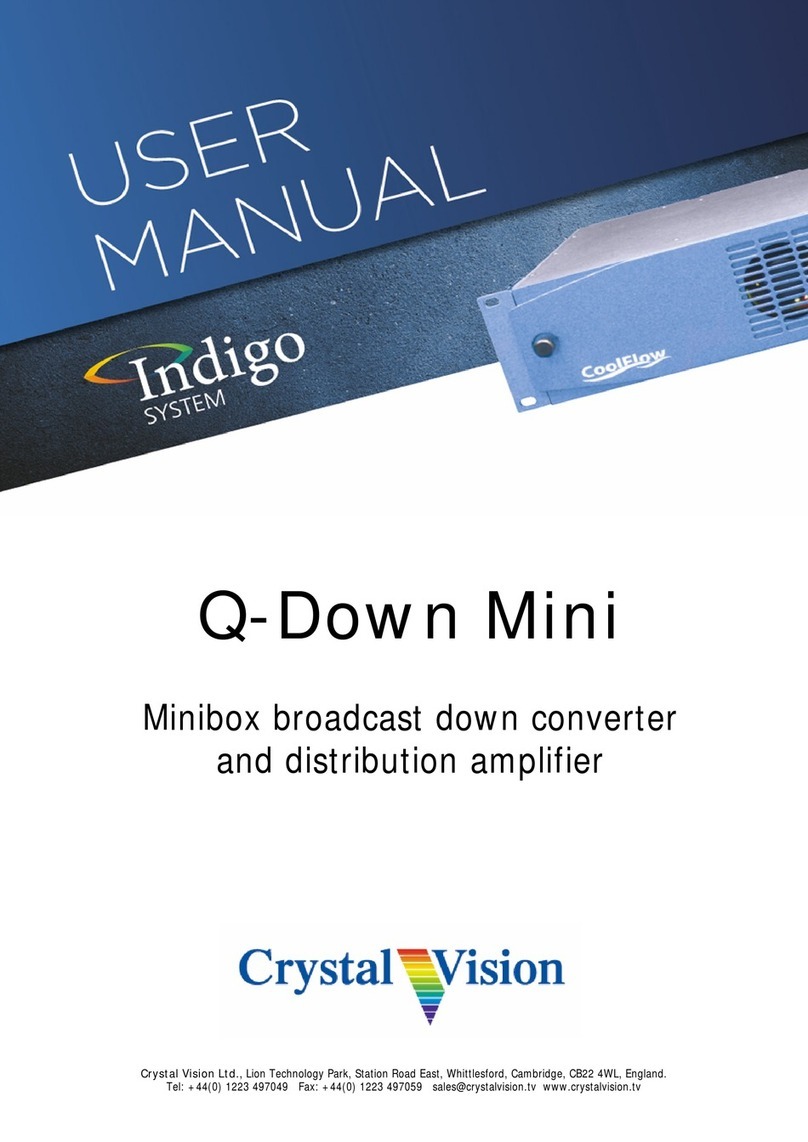TELEREADER CWR-610E User manual

Code Master
Model CWR-610E
OPERATING INSTRUCTIONS

CONTENTS
RATING ...................................................................................................... 3
DESCRIPTION OF PANELS ............................................................................ 5
METHOD OF USE
Preparation ....................................................................................... 7
Reception o CW ............................................................................... 7
Code interpretable range and word space ........................................... 7
Reception o RTTY ............................................................................. 8
Reception o commercial station ......................................................... 9
CONNECTABLE PRINTERS ............................................................................ 9
CONNECTION OF EXTERNAL TERMINALS OR CW HAND KEY .......................... 10
INTERNAL ADJUSTMENT, CHANGEOVER ADJUSTMENT ................................... 10
DISPLAY SCREEN AND OPERATION STATUS DISPLAY ..................................... 13
CP (CW random generator) .......................................................................... 14
LAYOUT OF ADJUSTING VOLUMES AND SWITCHING SPOTS ........................... 16
CORRESPONDENCE CHART OF DISPLAY CHARACTERS AND CODES (CW) ........ 17

- 3 -
RATING
1. Reception codes
CW - Morse Alphabet, numerals, symbols, special codes.
RTTY Baudot code 5-unit Baudot code (CCITT No. 2):
1 start bit, 5 code bits, 1.5 stop bits. Total 7.5 bits.
ASCII code 7-unit ASCII code (ISO/CCITT No. 5):
1 start bit, 7 code bits, 1 parity bit, 2 stop bits. Total 11 bits.
2. Inputs
AF input Input impedance 600 ohms (usable within 8 ohms to 100 ohms)
30 mV to 2 V rms.
TTL input
Baudot, ASCII TTL-level mark = L, space = H
RS-232C mark = –5 V to –15 V, space = +5 V to +15 V
(Reversible by internal selection).
CW Mark = L
3. AF requency 800 Hz, active ilter + PLL ilter.
CW Mark demodulation system.
RTTY Mark demodulation single side system (changeable to space demodu-
lation single side system by internal selection).
4. Display outputs RF output (CCIR, European standard VHF ch. 4, 62.25 MHz) or
Composite Video Signal outputs are changed over by internal selec-
tion.
(Set at RF output when shipping.)
5. Printer inter ace Centronis compatible, parallel inter ace built-in.
6. Display characters 612 characters × 2 pages; total 1,224 characters (maximum e ective
number o characters being received is 971).
7. Decoding speed
CW 3 wpm to 40 wpm; automatic ollow-up.
RTTY Baudot 45.45, 50, 56.88 74.2 baud
ASCII 110, 300, 600 baud
(Since the built-in demodulator does not operate on 300 baud or 600
bauds, eed signals o TTL level or RS-232C level rom TTL-IN.)

- 4 -
8. CW random generator (Code Practice = CP generator)
Produced codes Alphabet and numerals
Speed 2 wpm to 30 wpm
9. Power source DC 12 V, 700 mA (usable in DC 10 V to 13.8 V)
10. Overall dimensions 160 mm wide × 205 mm deep × 50 mm high.
11. Weight 1.1 kg
12. Accessories 2 earphone plugs
1 use (1 A)
1 cable with earphone plugs

- 5 -
DESCRIPTION OF PANELS
FRONT PANEL
POWER Power switch
MONI Monitor sound ON/OFF switch, and also used as CP start prohibition switch.
Only when the switch is in ON position, monitor sound is oscillated. When the
switch is turned OFF, in CP mode, only the random number display characters are
updated and operation is not started; in CW mode, on the other hand, the character
space judging time is shortened and the cursor moving speed is accelerated.
CW / RTTY The selector or CW and RTTY
CP UOS In CW mode,when the switch is pressed, the screen shows CP. At this time, i MONI
switch is turned on, the CP generator starts up. When this switch is pressed while
the CP generator is operating, its operation is temporarily stopped. When pressed
again, the operation is resumed rom the interrupted point.
In Baudot mode, when this switch is pressed, the UOS is turned on, and when
pressed again, it is turned o .
PAGE The screen changing switch; the pages are changed alternately at every press on
the button.
SPEED RTTY By every press on the button, the baud rate steps up rom 45.45 to 600 bauds.
Depending on the baud rate being used, the Baudot code and ASCII code are auto-
matically changed over. (That is 45.45, 50, 56.88, 74 bauds are Baudot; 110, 300,
600 bauds are ASCII.)
While in CP mode, by every press on the button, the CP generator speed is changed
rom 2 wpm to 30 wpm, one step is 1 wpm, rom 12 to 30 wpm, one step is 2 wpm
and 30 wpm is ollowed by 2 wpm.
MONITOR LED It lickers when receiving CW, RTTY or while CP is operating.
POWER LED Lights up when power is turned on.

- 6 -
REAR PANEL
RF OUT For connection with antenna input terminal o home TV.
When changed to VIDEO OUT inside, this terminal is used to connect with monitor
TV.
VR-4 This is used to adjust the clock requency or baud rate to 4,800 Hz in RTTY. It has
been correctly adjusted be ore shipping and should not be turned except when re-
adjusting. (The requency is always 4,800 Hz rom 45.45 to 600 bauds.)
PRINTER Centronics compatible printer data output terminals, rom which parallel 7 bit ASCII
codes are delivered.
ASCII unction code with re erence to only LF is delivered, all other unction codes
than CR, NUL, DEL, are ignored. Select a printer which incorporated bu er register
or one-line portion, and automatically eeds line when this bu er register becomes
ull, and also eed line when control code OA (LF: line eed coder) is entered.
CLOCK The terminal or checking or taking o clock 4,800 Hz or baud rate. (It can be con-
verted to a terminal to deliver the output o built-in demodulator at TTL level by
changing over inside the PCB.)
TTL. IN TTL input terminal o RTTY when using external demodulator. TTL level signal (or
RS-232C level) is ed to this terminal.
Mark L, space H. (Mark –5 ~ –15 V, space +5 ~ +15 V.)
CW: Connects to HAND KEY.
EXT. SP Connects earphone or speaker.
AF. IN Connects to external speaker head phone terminal o transceiver, etc.

- 7 -
METHOD OF USE
Pre aration
When connecting with a transceiver, arrange so that the case side o this unit and that o the
transceiver may be at the same potential.
Connect the AF. IN terminal on the rear panel with the external speaker terminal o the transceiver.
Connect rom the RF. OUT to the VHF ANT terminal o the television set.
Connect an earphone or a speaker to EXT. SP terminal.
Rece tion of CW
a. Set the CW/RTTY selector to CW mode. (Switch is o .)
b. Control the sound volume o reception by turning the AF knob on the transceiver.
c. Turn on the POWER switch.
The the cursor is displayed in the upper part o the le t side o the screen. At this time, the ol-
lowing message is displayed in the bottom line o the screen:
<Morse Code>
d. Since the AF input selection o this unit is adjusted to center requency o 800 Hz, when the re-
ception sound is adjusted to 800 Hz by turning the main dial o the transceiver, RIT or clari ier
control knob, the MONITOR LED lickers in response to the signal.
e. When the irst page is illed with 567 characters or more, the text is trans erred to the second
page rom the irst character. There ore, to look or previous characters, press the PAGE but-
ton. (5 lines are repeated)
When the PAGE button is depressed, the display returns to the irst page.
CODE INTERPRETABLE RANGE AND WORD SPACE
Codes generally consists o dots o 1 length unit and dashes o 3 length units. This machine can
distinguish dashes o 2 to 4 length units or dots o 1 length unit. So, a dash shorter than 2 length
units is regarded as a dot, and a corresponding character is displayed.
Example:
·– ·-
1:3 1:1.9
A I
I a dash is longer than 4 length units, its code is interpreted, but since the calculation standard
speed regards it as a slow code, the next code may be interpreted by mistake.
However, since the standard speed is always calculating the average o codes or 8 preceding char-
acters, the interpretation is not disturbed by mixture o one or two characters.
The standard word space is 7 dots. This machine assumes a word space when no code comes
in or two-dot length a ter a character portion is provided.
This machine displays an underline when an uninterpretable code is ed.
When a consecutive signal longer than 8 bits is ed, the signal is divided by 8 bits each, and
corresponding characters are displayed.

- 8 -
The correspondence between the display characters and the telegraph codes is shown in the
attached sheet.
Rece tion of RTTY
Since the unit incorporates a PLL system one side demodulator, it can receive commercial, mete-
orological and amateur communication with a certain signal intensity.
When an optional terminal unit is connected by using external input terminal (TTL. IN), the
unit can be upgraded to the maximum unctional state.
Set the switches as ollows:
CW/RTTY selector: RTTY (Switch is ON)
At this time, the ollowing message is displayed in the bottom line o the screen:
<Baudot Code> LTR UOS-OFF 45 Baud
HF band (Mode set LSB)
Turn the reception dial o the transceiver, RIT or clari ier and adjust so that the MONITOR LED
lickers when receiving a mark. In 170 Hz shi t, the lickering o LED varies as shown below, so
that critical adjustment is necessary.
When the dial is turned gradually rom the low beat pitch side to the high pitch side and MONITOR
LED changes thus:
Goes out →Flickers →Lights →Flickers →Goes out
(continued light
at mark)
(middle between
mark and space
(continued light
at space)
Adjust to the irst lickering point. I characters are not displayed normally through ine adjustment
(only numerals and symbol are displayed and characters do not appear), press the CASE button.
Or, i the characters are not displayed normally, it is also probable that the shi t may be reverse.
Adjust to the latter lickering point.
It must be noted that when the shi t width is more than 170 Hz, the LED lickers at to positions ac-
cording to the shi t width but does not light in the middle point.
VHF band
Since the VHF band is shi ted in the reverse direction o the HF band, reception to USB.
The baud rate o this set is adjusted to 45.45 bauds, and signals o di erent baud rate can-
not be interpreted. For the procedure o changing the baud rate, re er to the section on the
adjustment.
I the requency cannot be adjusted because o the selection type dial, adjust the re-
quency o the internal demodulator according to the procedure o adjustment given below.

- 9 -
Rece tion of commercial station
Since the transmission speed o a commercial station is usually 50 bauds, adjust the speed accord-
ing to the section o the adjustment.
The shi t width is normally more than 170 Hz, and the MONITOR LED lights up rom the low beat
pitch side as shown below:
Goes out Flickers Lights Flickers Goes out
|← →|
(continued light
at mark)
portion or shi t
width
light up at
space
Since this set is o single side system, it can be used regardless o the shi t width.
Turn the dial o the receiver to adjust to the irst lickering point.
RTTY exclusive use switch
U.O.S. Unshi t on-space (A ter receiving a space signal, the set automatically returns to the lower
case (character side).
I LTR signal is likely to skip due to inter erence or QSB, when this switch is turned on, the set
changes to the character side when a space signal is ed.
CONNECTABLE PRINTERS
Any printer o Centronics compatible parallel inter ace speci ication can be connected to this set.
The connector signals names or the printer in this set are as ollows. Connect the printer by
matching the signal names.
Connection o external terminals or CW HAND KEY

- 10 -
CONNECTION OF EXTERNAL TERMINALS OR CW HAND KEY
1. Feed the output o external demodulator into TTL. IN terminal at RS-232C level by using ear-
phone plug.
When the Output o external demodulator is at TTL level, cut the [Cut land REV].
2. When changing the CLOCK OUT pin or TTL OUT, re er to the description o adjustment and
checking.
3. To control normal/reverse selection rom outside, re er also to the section on changeover, ad-
justment.
INTERNAL ADJUSTMENT, CHANGEOVER ADJUSTMENT
ADJUSTMENT
Change o input requency
It is adjusted to 800 Hz at the time o shipping. I changing is necessary in relation to ilter or
monitor sound, adjustment o about plus 500 Hz or minus 100 Hz is possible by turning the VR.
1. Feed a new requency rom AF. IN terminal
2. Turn [VR2] until the maximum output is delivered to [TP2] on oscilloscope.
3. Stop input rom AF. IN.
4. Connect requency counter or oscilloscope to [TP3] and turn [VR3] until the reading coincides
with the new requency.
Readjustment o baud rate clock
Connect requency counter and oscilloscope to pin 2 o clock terminal, and adjust [VR4] to set
4,800 Hz.
The clock o 4,800 Hz is used throughout 45.45 to 600 bauds.
It must be noted there ore that i this clock requency is deviated, all baud rates go wrong.
Also note that the baud rate indication on the screen does not change even i the clock re-
quency is varied.
A 16- old value o desired baud rate is equal to the clock requency.
Use up 100 bauds with external MODEM. The unit can operate in up to 600 bauds by using
external clock and TTL. IN.

- 11 -
Adjust o RF OUT requency
This set is adjusted according to the CCIR European standard VHF ch 4 (62.25 MHz). I ine ad-
justment is necessary, turn the core o RF coil.
Frequency increased.
Frequency decreased.
Coil
In the Australian speci ications, the set is adjusted to VHF ch 1 (57.25 MHz)
CHANGEOVER
Changing method when using video monitor TV instead o home TV
Changing rom RF OUT to VIDEO OUT
Cut and bridge with solder at two positions:
1. RF OUT selector part: Cut "R" - short "V".
2. RF converter part: Cut "RF -VIO".
Cut and short correctly by re erring to the parts layout chart.
VIDEO OUT speci ication
Composite video signals (video normal modulation, synchronous negative modulation,
1.0 ± 0.2 Vp-p, 75 ohms).
Initial start changeover o Baudot, ASCII
The set is initially set to start in Baudot at the time o shipping. To start in ASCII, however,
bridge the [MODE SEL A] with solder.
At this time, the ollowing message is displayed in the bottom line o the screen:
<ASCII Code> 110 Baud
Changeover o display output CCIR system and NTSC system
The system is set to CCIR at the time o shipping. It can be changed to NTSC as necessary.
In this case, short the MODE SEL B [bridge land B] with solder.
Normal/reverse selection
The input o Baudot and ASCII is set at mark L at the time o shipping. It can be changed
to mark H.
Cut the MODE SEL REV [cut land REV].

- 12 -
To control normal/reverse selection rom outside, provide a switch between clock terminals
1 and 3.
When the [cut land REV] is cut, the operation is changed as ollows:
The internal demodulator becomes a space demodulator. The TTL. IN is changed to mark
H, space L input.
When changing CLOCK terminal to TTL OUT terminal:
Cut the [CUT land CLOCK] and bridge the [Bridge land TTL OUT] with solder.
When thus changed over, pin 2 o clock terminal delivers the output o built-in demodulator
and the clock output o 4,800 Hz adjusted at the time o shipping is cut o .

- 13 -
DESCRIPTION OF DISPLAY SCREEN
Two screen, containing 36 characters by 17 lines each, are changed over and appear as shown be-
low:
The ollowing messages appear in the operation status display area:
Mode Status display 1 Status display2
CW
<Morse Code> <Morse Code>
Baudot
<Baudot Code> LTR UOS-OFF 45 BAUD LTR.UOS-OFF 45 BAUD <BAUDOT Code>
ASCII
<ASCII CODE> 110 BAUD 110 BAUD <ASCII Code>
LTR
case is changed to
FIG
case when switch is changed to FIG.
UOS OFF
is changed to
UOS ON
when UOS is turned on.
Baudot At 45 bauds, the baud rate changes rom 45 to 50, 57 or 75 at every press on the
speed button.
ASCII At 110 bauds, the baud rate changes rom 110 to 300 and 600 at every press on
the speed button.

- 14 -
Baudot and ASCII are automatically exchanged when the baud rate is changed over.
CP (CW random generator)
Change to CP mode:
1. Push down MONI switch.
2. Turn RTTY/CW selector to CW side. The CW mode is selected.
3. Turn on power switch.
4. Push down CP UOS switch one.
Then the CP is started at a speed o 2 wpm. Therea ter, a ter every press on the SPEED CASE
button, the speed increases every 1 wpm rom 2 to 10 wpm, and every 2 wpm rom 12 to 30
wpm. Step up up to a necessary speed. When 30 blocks o ive characters each are sent out,
the operation stops.
When the CP UOS switch is pressed again, the display random characters are changed and the
operation is started again at the preset speed.
5. Turn o the power switch once, then the mode returns to CW.
Random characters are generated in a total o 40 di erent kinds, consisting o numerals
rom Ø to 9, alphabet A to Z, period (.), comma (,) slash (/) and question mark (?). Mean-
while, letters A to Z appear at a double requency as compared with other characters.
The screen in CP mode is displayed as ollows.
Page 1 ..... In this screen, the codes can be heard while visually checking the characters
being sent out.

- 15 -
Page 2 ..... In this screen, a ter sending o codes, the corresponding characters are dis-
played.
The wpm display changes according to the selection rom 2 to 30
CP-ON display is changed to OFF and to ON again by selection o CP UOS switch.
Even i CP-ON, when MONI switch is turned o , only the display appears and operation is not
started.

- 16 -
LAYOUT OF ADJUSTING VOLUMES AND SWITCHING SPOTS

- 17 -
CORRESPONDENCE CHART OF DISPLAY CHARACTERS AND CODES (CW)
Display Code Display Code
A
B
C
D
E
F
G
H
I
J
K
L
M
N
O
P
Q
R
S
T
U
V
W
X
Y
Z
·–
–···
–·–·
–··
·
··–·
––·
····
··
·–––
–·–
·–··
––
–·
–––
·––·
––·–
·–·
···
–
··–
···–
·––
–··–
–·––
––··
.
,
?
'
-
(
)
/
=
+
"
1
2
3
4
5
6
7
8
9
Ø
!
^
<
§
%
[
>
@
#
LineFeed
·–·–·– (period)
––··–– (comma)
–––··· (colon)
··––··
·––––· (apostrophe)
–····– (dash)
–·––·
–·––·–
–··–·
–···– (B )
·–·–· (AR)
·–··–· (quotation mark)
·––––
··–––
···––
····–
·····
–····
––···
–––··
––––·
–––––
–···–·– (BK)
·–··· (AS)
········ (HH)
···–··– (SX)
–·–··–·· (CL)
–·–·– (KA)
···–· (VE)
·–·– (AA)
·····–· (HR)
···–·– (SK)
NOV. 1982 Printed in Japan
Reprint: DC7XJ III.2017
Table of contents
Other TELEREADER Media Converter manuals
